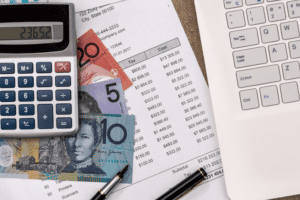Content

Another disadvantage is that the accrual basis might obscure short term cash flow issues in a company that looks profitable on paper. The cash basis of accounting is used by many small businesses because it’s simpler. You don’t have to deal with accounts receivable or accounts payable. You simply record income as it’s received and expenses as they’re paid. Under accrual basis accounting, revenues and expenses are recorded when they are earned, regardless of when money actually changes hands. Using the accrual basis means you need to include accounts receivable and accounts payable in your chart of accounts.
- This content is for information purposes only and should not be considered legal, accounting, or tax advice, or a substitute for obtaining such advice specific to your business.
- End on the last day of the calendar month ending nearest to the last day of the week tax year.
- Cash-basis accounting makes it simple to track your cash position…and not much else.
- For reporting purposes, accrual basis will usually provide better financial intelligence on the true state of your business.
On the other side, the store may look cash rich if there are few expenses in the accounting period. This is particularly dangerous if expenses occur, such as stock purchased on credit, but not accounted for in the store’s accounts. The storeowner may invest elsewhere or take a higher salary, though in fact the business cannot afford it at that time. With cash basis accounting the sales involving cash only are the ones appearing on the firm’s books, as are any expenses paid in that accounting period.
Also, because the cash basis doesn’t match revenues to expenses, timing differences can make it seem as though your business has sporadic revenues or isn’t financially viable in certain periods. Because income and expenses are recorded at different times if a business is using cash or accrual accounting, this also impacts when businesses incur tax liability as a result of these transactions. You can account for business and personal items using different accounting methods. For example, you can determine your business income and expenses under an accrual method, even if you use the cash method to figure personal items. Each taxpayer must use a consistent accounting method, which is a set of rules for determining when to report income and expenses. The most commonly used accounting methods are the cash method and the accrual method. The cash method is simple in that the business’s books are kept based on the actual flow of cash in and out of the business.
Analyze Cash Flow The Easy Way
Cash-basis accounting is the simplest accounting method available. In cash-basis accounting, you record income when you physically receive it and expenses when you physically pay it.
- However, during the project, it records the project’s expenses as they are being paid.
- It also gives an accurate picture of how much cash is on hand.
- Accrual accounting is more complex, but a reputable accounting system can handle a lot of the heavy lifting of recording receivables and payables for you.
- Expenses are recognized when and only when you actually pay.
- At the end of an accounting period, the storeowner calculates cash flow from that in the account and from any expenses paid during the time.
If you adopt the calendar year, you must maintain your books and records and report your income and expenses from January 1st through December 31st of each year. First and foremost, many firms simply aren’t allowed to use https://www.bookstime.com/. It’s not recognized by the Generally Accepted Accounting Principles . Nor is it allowed under the International Financial Reporting Standards . Before you get into the nitty-gritty of the topic, you must grasp the basics.
Pros And Cons Of Cash Accounting
This means that if your business were to grow, your method of accounting would not need to change. Cash basis accounting offers a simple and straightforward approach to recording financial transactions. Since it only accounts for paid or received cash, it makes tracking a company’s cash flow much simpler. It’s also easy to learn and may be more cost-efficient, too.
The ability to “match” revenues and related expenses within the applicable periods so companies can appropriately analyze profitability margins. Whether you own a small company or a large corporation it is important to maximize the value of your accounting records so you can make… Moreover, a company’s expenses are not recognized until an actual cash payment is made (i.e. a real cash outflow).

A change in the depreciation or amortization method (except for certain permitted changes to the straight-line method). Costs allocable to natural gas acquired for resale to the extent these costs would otherwise be allocable to cushion gas stored underground. However, see the exception for certain small taxpayers, discussed later. Use this method each year unless the IRS allows you to change to another method. If you use LIFO with the retail method, you must adjust your retail selling prices for markdowns as well as markups. Multiply the closing inventory at retail by the average markup percentage.
Cash
With this action, you can defer some business profit and reduce your tax liability for the reporting year. As a small business owner, it’s important to keep track of your business income and expenses and pay taxes on your profits. These might not be your favorite aspects of entrepreneurship, but they’re essential for keeping your business in the black and ensuring you don’t get into trouble with the IRS. With the accrual method, your AP records will clearly show that you have a scheduled outflow of cash in two months to pay the outstanding bill. You’ll be able to easily see what amount of cash you have actually available to spend (and how much you’re expecting to get in the future as your own AR invoices are paid by your customers).
You can also better specify the expenses you wish to make deductible in your tax return. This flexibility makes it a good option if you need to defer cash income for a later period or accelerate cash payments to take advantage of higher deductible benefits. Cash basis accounting is an accounting method that recognizes revenue when monies are received and expenses when monies are paid out. This accounting method shows only cash that is actually received or disbursed during a particular accounting period.
One of our clients was using cash basis accounting and started to experience rapid growth. Cash basis wasn’t giving them a clear picture of the overall performance of the company and cash flow was a big issue for them. Cash basis accounting is based on your company’s cash activity. You can think of cash basis accounting similarly to your checkbook register – at the end of the month, you balance everything to see how much cash you have in the bank. While it just secured a contract, you don’t plan on receiving compensation until the completion of the project.
Comparing Cash Basis Vs Accrual Basis
Your bookkeeping team imports bank statements, categorizes transactions, and prepares financial statements every month. Understanding the difference between cash and accrual accounting is important, but it’s also necessary to put this into context by looking at the direct effects of each method. A person requires a reduced knowledge of accounting to keep records under the cash basis. Several accounting software packages are designed for the cash basis of accounting, to make them easier to use. If you receive an electric bill for $1,700, under the cash method, the amount is not added to the books until you pay the bill. However, under the accrual method, the $1,700 is recorded as an expense the day you receive the bill. If you sell $5,000 worth of machinery, under the cash method, that amount is not recorded in the books until the customer hands you the money or you receive the check.
An exception to the economic performance rule allows certain recurring items to be treated as incurred during the tax year even though economic performance has not occurred. The exception applies if all the following requirements are met. You are considered to receive an item of gross income if you actually or constructively receive it or it is due and payable to you. The following entities can use the cash method of accounting. If you have not been applying the general rule and/or the 12-month rule to the expenses you paid in advance, you must obtain approval from the IRS before using the general rule and/or the 12-month rule. If you do not regularly use an accounting method that clearly reflects your income, your income will be refigured under the method that, in the opinion of the IRS, does clearly reflect income.
How To Choose Between Cash Basis And Accrual Accounting
If the PSC elects to be an S corporation, the S corporation can continue the election of the PSC. The corporation makes an election under section 444 of the Internal Revenue Code. A tax year elected under section 444 of the Internal Revenue Code. All S corporations, regardless of when they became an S corporation, must use a permitted tax year. Multiply each partner’s months of deferral figured in step by that partner’s share of interest in the partnership profits for the year used in step . Figure the number of months of deferral for each partner using one partner’s tax year. Find the months of deferral by counting the months from the end of that tax year forward to the end of each other partner’s tax year.

If there is no majority interest tax year, the partnership must use the tax year of all its principal partners. A principal partner is one who has a 5% or more interest in the profits or capital of the partnership. To change to a proper tax year, you must do one of the following.
Cash-basis accounting is a simple way to easily see a company’s cash status. Lenders do not feel that the cash basis generates overly accurate financial statements, and so may refuse to lend money to a business reporting under the cash basis. However, this Cash Basis Accounting may not be the case for a small business that cannot afford the services of a CPA to prepare its books. The cash basis of accounting is the practice of recording revenue when cash has been received, and recording expenses when cash has been paid out.
When the business owns little or no inventory, i.e., the business does not have buildings, massive office furniture, extensive computer database systems, production machinery, etc. When readers purchase services discussed on our site, we often earn affiliate commissions that support our work.
If you’re new to the finance side of running a business, it can be a confusing decision as well. In this blog, we’ll explain what each method means, the differences between them, and why one usually is a better option for your business. This article is for entrepreneurs and professionals interested in accounting software and practices. Since the results are often inaccurate, firms cannot publish management reports firms using such accounting. Do not provide the exact timing of the changes in the financial condition of a business. Cash FlowsCash Flow is the amount of cash or cash equivalent generated & consumed by a Company over a given period.
Indirect ownership is generally taken into account if the stock is owned indirectly through one or more partnerships, S corporations, or qualified PSCs. Stock owned by one of these entities is considered owned by the entity’s owners in proportion to their ownership interest in that entity. Other forms of indirect stock ownership, such as stock owned by family members, are generally not considered when determining if the ownership test is met. You are a calendar year taxpayer and pay $10,000 on July 1, 2021, for a business insurance policy that is effective for only 1 year beginning on July 1, 2021.
Who Uses Cash Basis Accounting?
One of the first decisions you have to make regarding your business financials is whether you will use the cash basis or accrual basis. Here’s how to decide which one is right for you, and what it means for your financial statements and the amount of tax you owe. Cash and accrual accounting differ in a number of ways, but the main difference is when income and expenses are actually reflected in a business’s books. Businesses that are eligible to use cash accounting almost always prefer to use that method because it’s simpler and more straightforward.
Difference Between Cash And Accrual Accounting
The fastest way to receive a tax refund is to file electronically and choose direct deposit, which securely and electronically transfers your refund directly into your financial account. Direct deposit also avoids the possibility that your check could be lost, stolen, or returned undeliverable to the IRS.
We converted their books to accrual-based accounting so they could pull key performance indicators and see a general trend of their financial standing. Cash was short so we created a days sales outstanding KPI to help them with cash projections because even with rapid growth, there was little money in the bank. This allowed them to see where problems existed and how much money they had in the bank at any point in time. Since the IRS requires most nonprofit organizations to file a 990 information return, accrual basis accounting is preferable because it allows for GAAP compliance.
